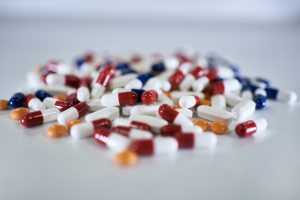News
27th October 2020 - Manufacturing Clinical Supplies: The Role of Placebos and the Challenges of Manufacturing they Present
One aspect of clinical trial manufacturing that often slips under the radar when designing, planning, and budgeting a clinical study is placebo manufacture.
A placebo is defined as a substance given to someone who is told that it is a particular medicine: either to make that person feel as if they are getting better or to compare the effect of the particular medicine when given to others.
Clinicians have long observed the ‘placebo effect’, which is a well-documented and recognised phenomena whereby there is a positive effect on a person’s health experience after taking a non-active (placebo) medication triggered by the belief that they expect to gain a benefit from the treatment. The effect is thought to occur in up to 1 in 3 people.

Placebo dosage forms are therefore administered to volunteers and / or patients during double blind clinical trials to act as a control. The placebo dosage form is manufactured from inert substances with no pharmacologic activity and are designed to look and feel exactly the same as the active product. The blinding of both investigators and patients, so that the product (active or placebo) the patients are receiving is unknown, decreases the likelihood of biased observations on the effectiveness and allows for unbiased observation of clinical outcomes; which is particularly important when the assessment includes subjective endpoints such as pain.
Initial Target Product Profile Considerations for Placebo Dosage Forms
Placebos are required for all dosage forms types, including: tablets, capsules, topicals products, powders for reconstitution, nasal sprays and injectables etc. The placebo dosage form is generally designed to have the same physical properties as the active so it looks the same (e.g. size, volume, shape, colour, etc.). Depending on how the active is administered other properties can be important such as: the amount of effervescence produced, how the solution looks when a tablet is dissolved in glass of water, how the tablet tastes, how a cream feels and spreads on the skin, or how a nasal liquid is retained in the nose.
Another important aspect is the design of the clinical study and whether for example a patient will receive both the active and placebo or how much communication between patient groups must be. All these factors must be carefully considered and managed by the formulator / manufacturer to ensure that un-binding of a clinical study does not occur whilst also ensuring the placebo product and manufacturing process comply with regulatory requirements.
Challenges with Placebo Design and Batch Manufacture
Manufacturing a placebo tablet of the correct size and shape may at first not appear to be a significant challenge other than obtaining the correct tooling and has become significantly simpler in recent years with the availability of ready to use directly compressible excipients that require no processing other than compression.
Often the comparator tablet however will have an API that imparts a colour on the tablet or the tablet will have been coated with a coloured film coat; matching these colours is often a challenge and becomes even more complex if the tablet is to be dissolved in water before administration as the colour and look of the solution must also be matched. The use of various dyes / lakes needs to be employed but this can require significant work and judgement.
Another challenge with tablets or powders is taste. Often active dosage forms have a significant taste with many drug substances tasting very bitter or leaving an unpleasant after-taste. Matching these attributes is critical but can be very difficult as any materials used must be approved for use in pharmaceutical products and assessment of such properties can be difficult to determine.
Where matching colours and / or having to blind a tablet with proprietary markings or logos that cannot be replicated, one option.
For liquid nasal drug products, the formulation of a placebo should consider factors such as pH, osmolality viscosity which may result in patients noticing a different effect on actuation of the device (e.g. spray characteristics) and in the sensory characteristics experienced after dosing.
Techniques Used to Overcome Placebo Challenges
Encapsulation and Over-Encapsulation
One relatively simple way to blind propriety markings or logos is to mill the commercial comparator tablet and then fill it into a capsule and then manufacture a matching placebo capsule filled with an inert filler. However, the effect of milling the active tablet is often likely to result in altered drug release performance.
As an alternative one widely used option is that of Over-Encapsulation. In this process the whole tablet (or capsule) is placed into a larger opaque capsule shell, generally followed by back filling of the space with an inert filler and sealing the capsule. This provides a simple and convenient way of masking colours, marking and taste blinding the patient and investigator as to which capsules contain the active and which do not.
Despite the relative simplicity of this method there are several important questions to be answered, including:
- Does the over-encapsulation effect the dose delivery (e.g. disintegration / dissolution rate)?
- How is the expiry date affected / justified?
- Is a stability study required?
- Is the active tablet compatible with the capsule shell components and / or the backfill materials?
- Will the capsule shell colour fully blind the contents?
Food / Drink
Over encapsulation is often used to mask a difficult to match taste but this may not possible where the intended method of administration is to reconstitute a powder in a drink or mix with food. In these circumstances the clinical study may have to be proscriptive in the choice of drink / food to be used to adequately mask the taste.
Planning a Placebo Batch
In formulation development studies where the active is a new chemical entity or is being reformulated, the development of the placebo is generally built into the original development program. For studies where the comparator is a currently marketed product, the placebo development / manufacture may be a standalone program and will generally be a rate limiting activity often sourced directly by the Clinical Research Organization.
The manufacture of placebo dosage forms for use in clinical trials is also subject to the same regulatory compliance requirements of active dosage forms:
- Materials much be sourced, controlled, and tested.
- Analytical specifications must be justified and set.
- Analytical methods must be applied to show compliance with the specification and absence of the active.
- The effect of any changes made to the active such over-encapsulation must be shown to not significantly alter the quality or performance (e.g. Bioavailability) of the product.
- Stability studies must be conducted, and expiry / retest date assignment justified including careful deliberation about any changes made to the packaging of the active product.
- Systems must be in place to ensure both security of the blinding to the patient and investigator whilst also ensuring the blind can be easily broken in case of any emergency.
Therefore, despite the initial thought of many that ‘making a placebo will be easy’ it is clear that designing and manufacturing a suitable placebo dosage form presents many unique challenges over and above those required for the active product. Formulators, manufacturers and quality assurance should not be assumed to be something that can be developed and / or sourced at the last minute.

